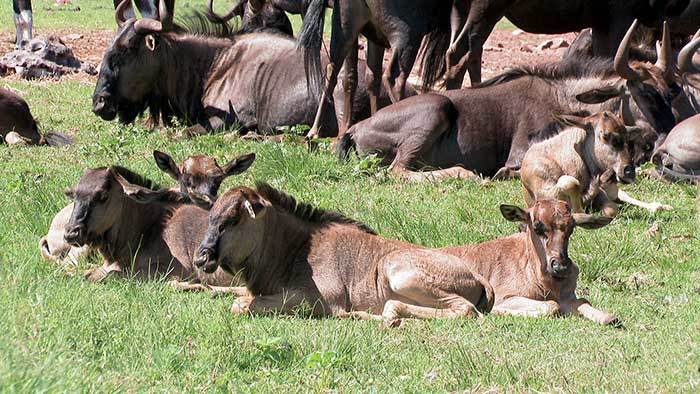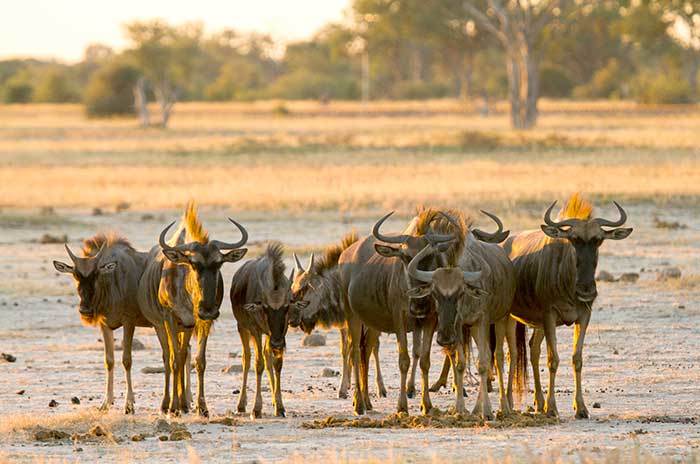Wildebeest Blue and Black or African Gnu Facts
Wildebeest Blue and Black are a common African antelope, found in large herds in Kruger National Park. November and December sees the annual wildebeest migration to the plains of the Serengeti.

Blue Wildebeest or Gnu
The most common species found in Southern Africa. Approx 1.7 meters tall, 380 kilograms
Characteristics
Wildebeest, or gnus are noisy. They constantly emit low moans and if disturbed, snort explosively.
Continually on the move as they seek favorable supplies of grass and water.
Active both day and night, they often string out in long single columns when on the move.
They also cover long distances at a slow rocking gallop but can run fast when necessary.


Defence
When neighboring bulls meet at the edges of their territories they go through a highly ritualized “challenge” in which they paw the ground, buck, snort and fight.
They typical combat position in on their knees, facing one another, with their foreheads flat on the ground – they knock heads and hit at the base of the horns but seldom injure one another
When alarmed, the animal swishes its long tail back and forth so vigorously that the loud whistling or hissing sound it creates can be heard for almost a kilometre
The jaw structure, and their wide rows of teeth, prevents them from eating many of the longer types of grasses, hence the association with Zebra who can eat longer grass
Habitat
Zebras and wildebeests sometimes graze together for security.
Wildebeest prefer short grass whereas Zebras longer grass. They are unable to go without water for more than a few days
When alarmed, the animal swishes its long tail back and forth so vigorously that the loud whistling or hissing sound it creates can be heard for almost a kilometre
The jaw structure, and their wide rows of teeth, prevents them from eating many of the longer types of grasses, hence the association with Zebra who can eat longer grass
